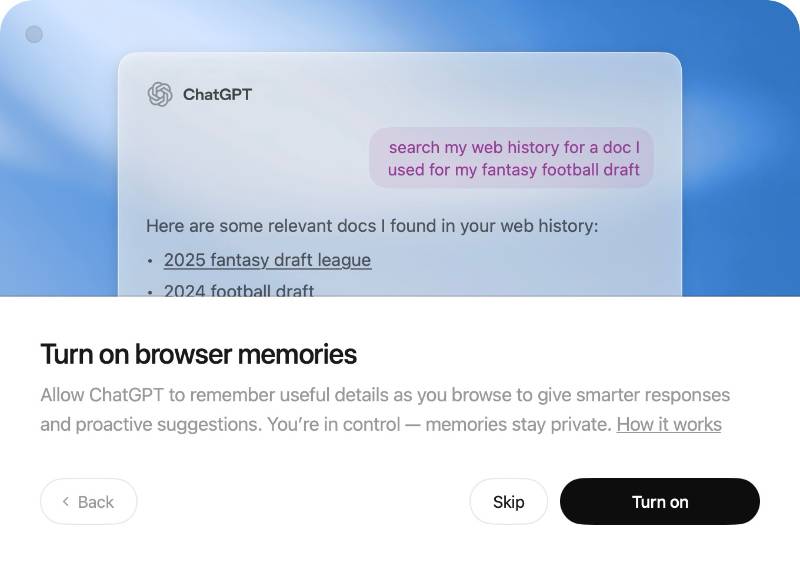Understanding Amazon Rufus and Why It Matters
Amazon Rufus is an advanced AI-driven system that shapes product listings and product recommendations on Amazon. Building on Amazon’s internal COSMO algorithm—a multi-objective machine learning framework—Rufus interprets massive amounts of data (titles, bullet points, A+ Content, buyer questions, reviews, etc.) to guide how listings are displayed and recommended to shoppers.
Unlike older keyword-based systems, Rufus adopts a more conversational and semantic approach to match products with buyer queries. Rather than simply serving up a long list of items based on raw keyword matches, Rufus tries to understand the shopper’s intent (the “why” behind a search). Through generative AI and dialogue-based Q&A, it refines and narrows recommendations, helping customers find precisely what they need.
For Amazon sellers, this new approach represents both a challenge and an opportunity. Relying solely on keyword repetition or classic SEO tricks will no longer suffice. Instead, your listing content needs to address real user questions, highlight genuine benefits, and clarify usage scenarios in a structured, easy-to-understand format.
The Logic Behind Rufus (and COSMO)
COSMO’s Multi-Objective Foundation
Rufus is built on top of COSMO, a multi-objective optimization framework that balances several factors when evaluating or generating listing content:
- Keyword Relevance: Ensuring the text aligns with real shopper queries.
- Readability and Context: Maintaining coherent, user-friendly language that explains “why” a feature matters.
- Compliance: Avoiding restricted terms and aligning with Amazon’s category-specific rules.
- Conversion Potential: Leveraging signals from buyer behavior—clicks, conversions, ratings, and more—to predict what content works best.
COSMO scores each piece of text across these objectives, then iteratively refines recommendations by learning from real-world performance. Rufus takes these ideas further, layering on a deeper semantic understanding (e.g., synonyms, usage contexts) and real-time shopper data so that suggestions aren’t merely about stuffing keywords; they’re about speaking to buyer intent.
How Rufus Operates
- NLP and Semantic Matching: Rufus goes beyond literal keywords, interpreting phrases in context. For instance, “office-friendly coffee maker” and “quiet coffee machine for work” would be seen as closely related.
- Structured & Unstructured Data: It pulls from reviews, product attributes (size, color, etc.), images, Q&A, and even user comments to determine if your item truly satisfies a query.
- Contextual Relevance: It looks for rich, scenario-based descriptions. If your bullet points only list specs, Rufus may struggle to match your product to a more specific or nuanced customer need.
- Continuous Feedback Loop: Rufus observes actual shopper interactions—did they click, purchase, return, or comment?—and adjusts which listings surface most prominently for a given set of user requirements.

Key Changes from Traditional Amazon Search
- Intent-Focused Matching
- Before: Sellers could load up on exact-match keywords to rank higher.
- Now: Rufus interprets the “why” behind the search. Simple keyword repetition with no contextual clues is far less effective.
- Conversational Recommendations
- Before: Search results often presented a long page of items, relying on standard Amazon SEO.
- Now: Rufus uses dialogue and Q&A to ask clarifying questions about budget, usage, style preferences, or special requirements. Products lacking comprehensive bullet points or thorough descriptions may fail to appear in these more personalized recommendations.
- Comprehensive Listing Analysis
- Before: Many sellers could get away with minimal descriptions and a few bullet points.
- Now: Rufus prioritizes listings that are complete, logically structured, and scenario-rich. If your bullet points and A+ Content are bare-bones, you may lose visibility.
How Rufus Influences Listing Creation
Titles
- Use Scenes and Key Attributes: Rufus prefers titles that integrate the main keyword, essential product attributes, and one or two usage contexts. For example, “Portable Waterproof Bluetooth Speaker, 360° Sound for Outdoor Party, 10-Hour Battery Life” instead of just “Bluetooth Speaker, 10H Battery, Waterproof.”
- Maximize Allowed Length (Within Reason): Amazon typically permits up to ~200 characters (exact limits vary by category). Rufus tends to favor titles that approach that limit with relevant phrases—but always maintain readability and natural flow.
Bullet Points
- Structure Each Point as Feature + Benefit: Explain how each feature directly helps the user. For instance, “IPX7 Waterproof—Enjoy worry-free poolside parties or beach trips without damaging your speaker.”
- Cover 5 Points if Possible: Most categories allow five bullet points. Rufus often “checks” these bullet points to understand your product’s core value, usage, and differentiators. Unused bullet slots are missed opportunities.
- Scenario-Driven: Include context, such as “Perfect for family camping trips” or “Ideal for pet owners.” This scenario-based approach helps Rufus match your item to more specific buyer questions.
Descriptions and A+ Content
- Thorough Information: Rufus mines the product description (or A+ Content, if you’re brand registered) for deeper details. Topics like how the product solves a pain point, a short FAQ, or usage instructions help the AI answer shopper questions.
- Structured Layout: In A+ content, use headings, subheadings, and short paragraphs to make it simple for the AI to find key data (and easy for humans to read).
- Illustrations and Alt Text: Even though Rufus can’t directly read text overlaid in images, it can interpret alt text and any textual descriptions around images. Meaningful alt text (e.g., “Hiker carries waterproof backpack in heavy rain”) helps the system capture usage scenarios.
Reviews and Q&A
- Leverage Real Feedback: Rufus may quote or summarize reviews when recommending a product to a shopper. If multiple reviewers mention “the speaker held up great at a beach party,” Rufus can incorporate that.
- Fill Information Gaps: If you see recurring customer questions in Q&A (e.g., “Does this come with a charger?”), add clarifications into bullet points or descriptions so future buyers—and Rufus—get answers immediately.
Usage Scenarios
- Launching a New Product
Rufus is particularly useful if you lack historical data. It cross-references competitor information, trending keywords, and your product attributes to propose effective listing structures. - Refreshing a Plateaued Listing
If your sales and conversions stagnate, updating bullet points or descriptions with scenario-based benefits can re-energize your listing. Rufus sees these changes and may rank or recommend your product more often. - Seasonal Marketing
Buyer needs shift with holidays or back-to-school periods. Rufus picks up on new shopper queries. Tailoring your listing content to seasonal usage (e.g., “Perfect Christmas Gift,” “Great for Dorm Living”) can significantly boost relevance. - Listening to Q&A
By regularly reviewing buyer Q&A and adjusting your listing content, you help Rufus learn that your product matches certain queries, especially if you explicitly address these details in bullet points or A+ Content.
Best Practices for Sellers
- Combine AI Insights with Human Touch
- Rufus suggestions (or any AI-based tool) won’t inherently reflect your brand’s unique story. Review and refine all AI-generated text to maintain authenticity.
- Don’t skip crucial details that only you know (e.g., specialized materials, unusual sizing, or brand-specific features).
- Focus on Semantic Relevance, Not Keyword Density
- Overstuffing the same keyword repeatedly is outdated. Instead, use synonyms or variations that cover the product’s potential use cases.
- For a coffee machine, mention “office-friendly coffee maker,” “quiet home brewing,” or “perfect for single-cup mornings” to catch multiple user intents.
- Stay Compliant
- Amazon’s style guidelines remain strict. Words like “best-selling” or unverifiable claims (e.g., “FDA approved”) can get your listing flagged.
- Follow category-specific rules on character counts, prohibited phrases, and product disclaimers.
- Iterate and Test
- Run small experiments (e.g., adjusting bullet points or rewriting descriptions) and track click-throughs, conversions, and reviews.
- Monitor new seasonal or trending keywords in your niche. Keep adapting your listing so that Rufus always has fresh, relevant data to work with.
- Embrace Rich Content
- Use A+ Content or brand storytelling in the description to answer buyer questions thoroughly.
- Incorporate short, scenario-driven videos or multiple high-quality images that speak to distinct buyer scenarios.
Pitfalls and How to Avoid Them
- Generic, Robotic Copy
- Solely auto-generated text can become dull or repetitive. Weave in genuine examples or personal brand tone.
- If you fail to clarify real-life benefits, Rufus might not see your listing as relevant for user-specific queries.
- Sparse Bullet Points
- Listing a feature without tying it to a scenario or advantage can leave Rufus and human buyers unsure why it matters.
- Always link a feature (e.g., “10-hour battery”) to a benefit (“great for extended road trips”).
- Ignoring Reviews and Q&A
- If the same question pops up repeatedly in Q&A or negative reviews highlight a missing feature, fix it in your listing.
- Rufus can parse these user discussions. Incomplete or inaccurate listings might yield fewer recommendations.
- Neglecting Backend Fields
- Fill in all relevant attributes (materials, dimensions, usage). Rufus cross-references structured data to better match your product with user filters and queries.
- Include any relevant synonyms or complementary search terms in the backend but avoid exact duplicates or excessive repetition.
How Kua.ai Amazon Listing Optimizer Can Help
As the Amazon landscape shifts toward more semantic and AI-driven models, having a dedicated tool to streamline your listing optimization is extremely valuable. Kua.ai Amazon Listing Optimizer is designed to help sellers tackle the complexities introduced by Rufus and COSMO-based logic. Its key advantages include:
- Comprehensive Keyword & Semantic Analysis: Kua.ai identifies not just top-tier keywords but also long-tail and scenario-based phrases that resonate with real shopper questions.
- Scenario-Driven Content Suggestions: Instead of automatically repeating the same keywords, it suggests bullet points or descriptive text that highlight product usage, benefits, and real-life applications—crucial for Rufus alignment.
- Compliance-Friendly Recommendations: You’re guided away from restricted terms or style violations so that your listing stays within Amazon’s rules.
By harnessing Kua.ai Amazon Listing Optimizer, you not only integrate best practices for Amazon Rufus but also preserve your unique brand voice. The tool can drastically reduce the guesswork involved in listing creation, ensuring that each element—from the title through to product description—aligns with how Rufus evaluates and recommends products.
View more FBA niche and opportuinties here.
Join 200,000+ Sellers Growing with Kua.ai
You may also interested...

Unlocking Explosive Growth: The Ultimate Guide to Affiliate for Instagram for Shopify Sellers 2026

Top SEO Practices Every Packaging Business Should Implement for Long-Term Growth













